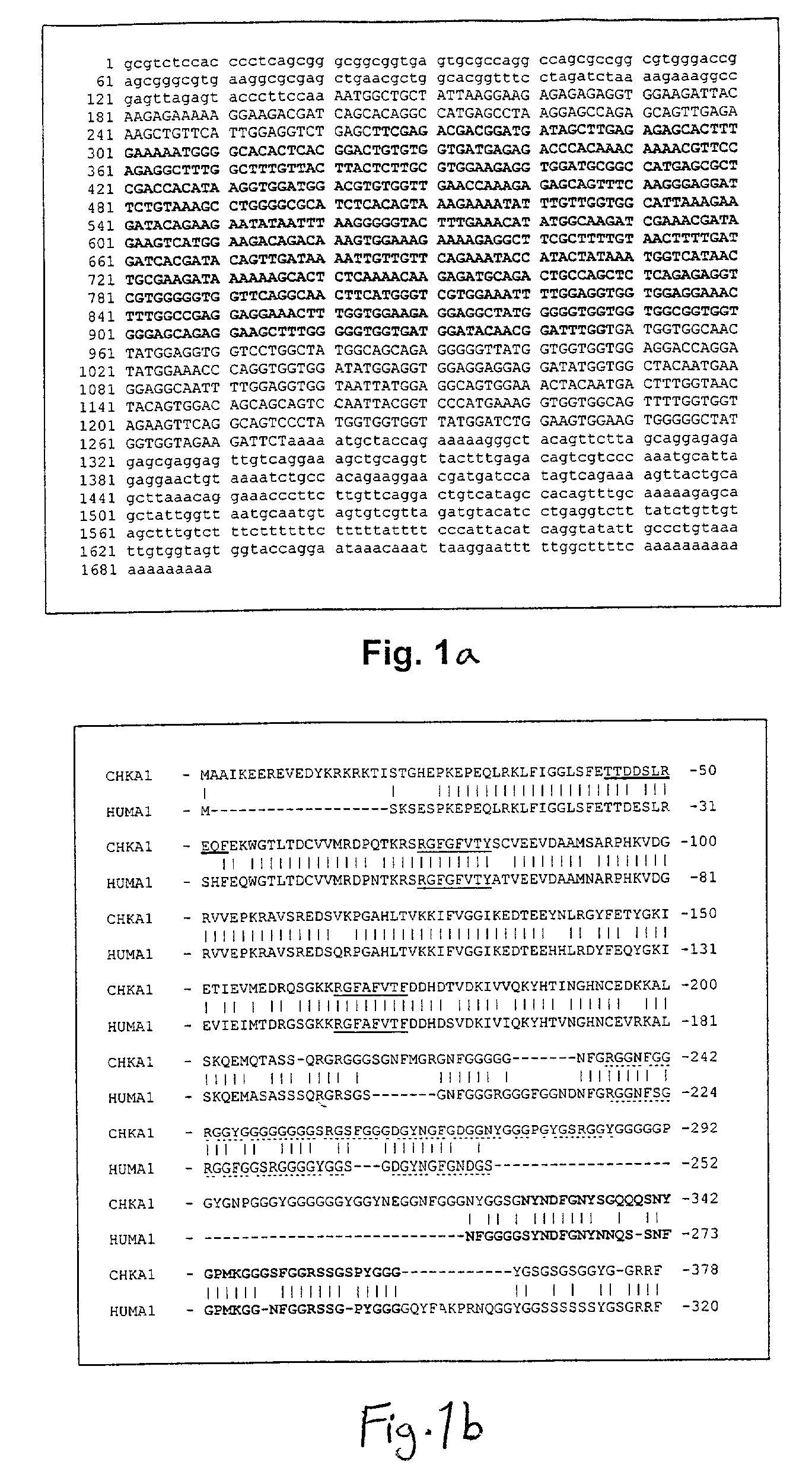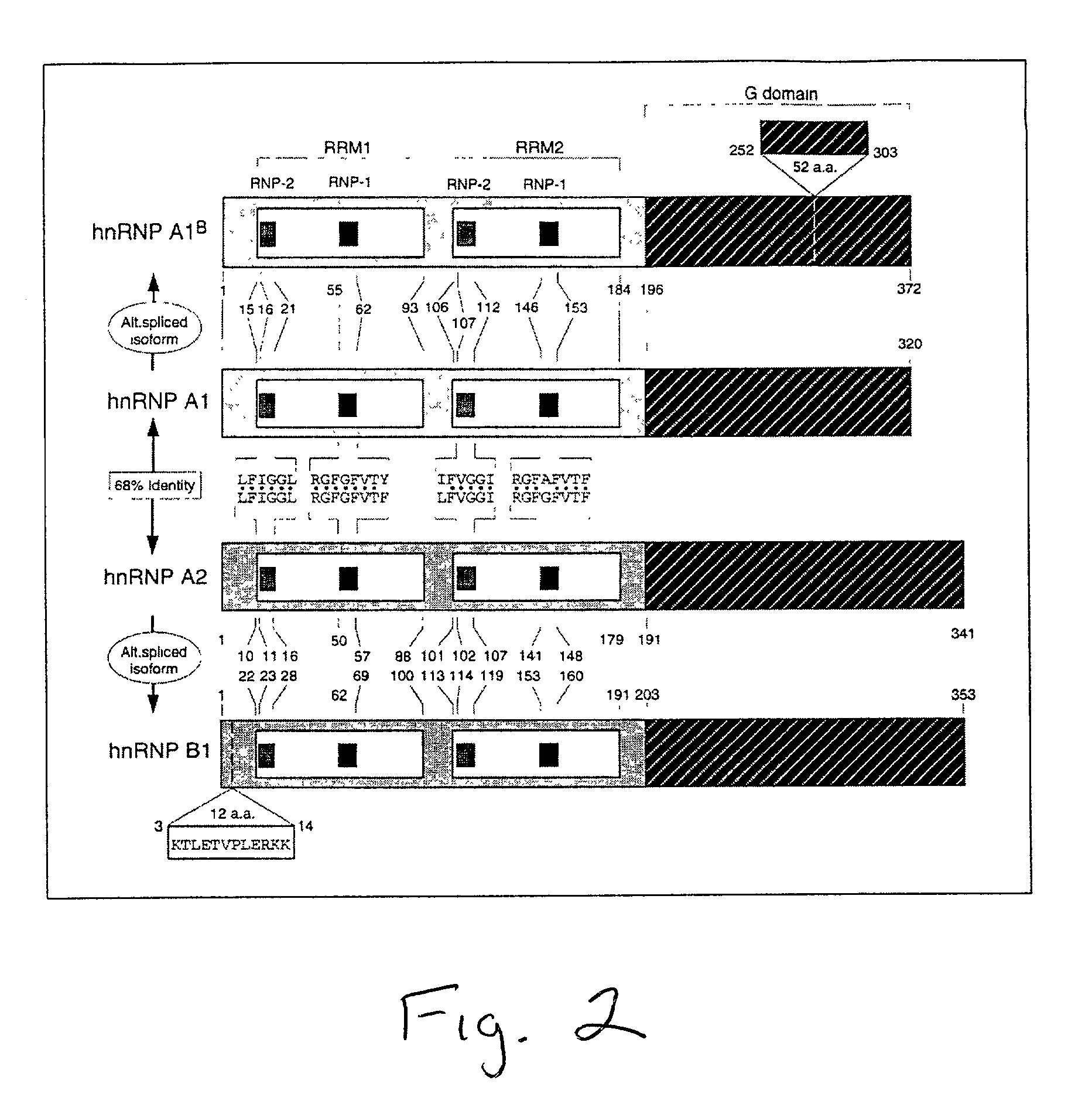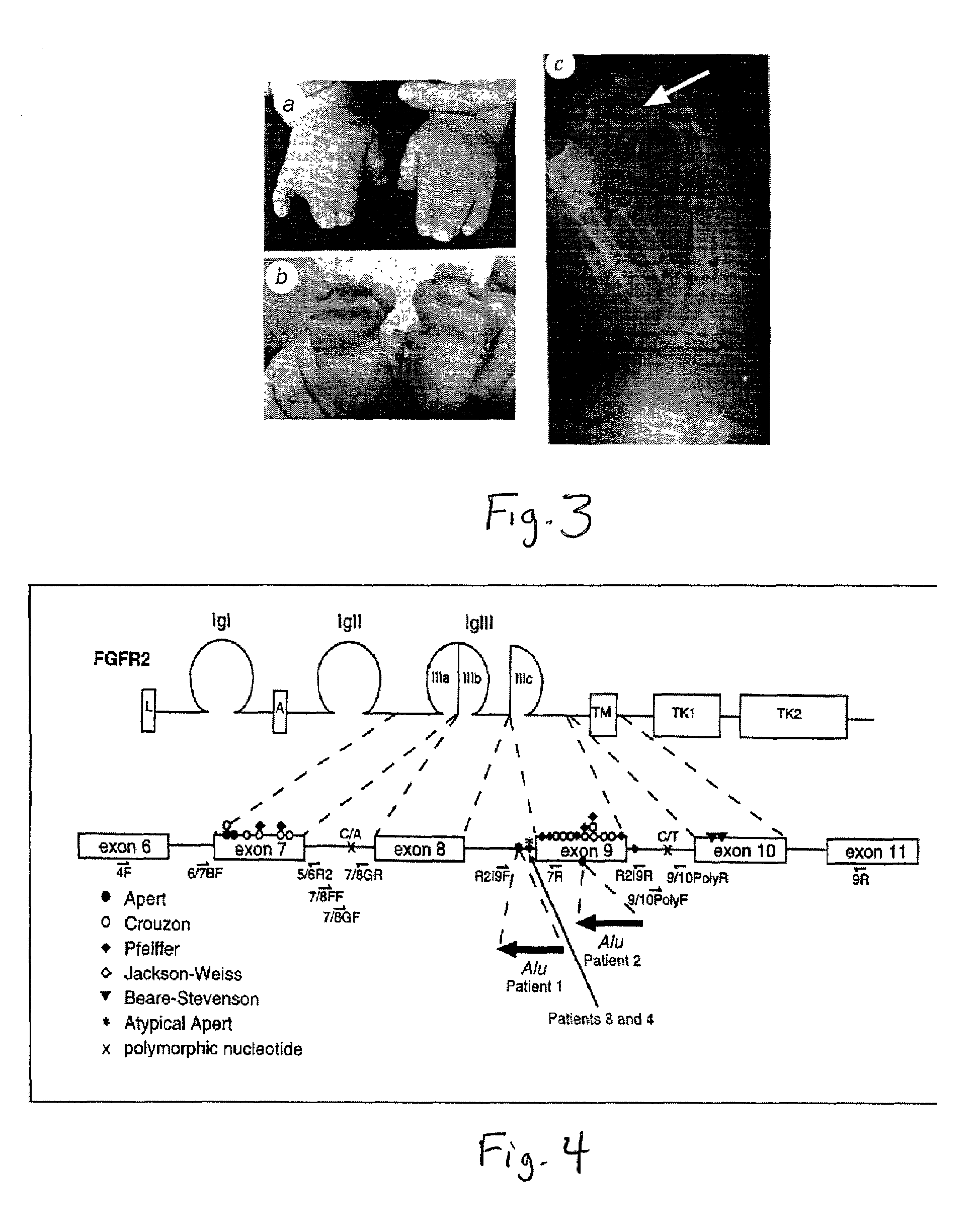Splice choice antagonists as therapeutic agents
a technology of splice choice and antagonist, which is applied in the field of methods and reagents, can solve the problems of inability to detect in vivo or in vitro either of these isoforms, inability to provide a pool of unspliced spliced hiv-1 pre-mrna, and inefficiency in splicing hiv-1 pre-mrna to provide a pool of unspliced
- Summary
- Abstract
- Description
- Claims
- Application Information
AI Technical Summary
Problems solved by technology
Method used
Image
Examples
example 1
[0415]Inhibition of hnRNP A1 Function
[0416]To test the hypothesis that hnRNP A1 is involved selecting the correct splice choice variant of FGFR2, exon competition assays were designed. The following competition studies were performed with the hypothesis that the ASF / SF2 and hnRNP A1 are antagonists and make splice choice selections in the third exon loop of the fgfr2 pre-mRNA (Caceres et al., 1998; Caceres et al., 1994; Mayeda and Krainer, 1992; Yang et al., 1994). ASF / SF2 preferentially selects the proximal splice choice IIIb exon, while hnRNP A1 selects the distal splice variant IIIc by binding to the ESS sequence in the IIIb exon (Del Gatto-Konczak et al., 1999). Splice choice selection is based on the relative concentration of the two splicing factors so that high ASF / SF2 concentration yields the IIIb mRNA splice variant and production of the FGFR2IIIb isoform of the receptor and should result in a fused cartilage phenotype rather than discrete nodules.
[0417]The distal tips of s...
example 2
[0419]The ribonucleoprotein hnRNP A1 plays a role in both RNA splice site selection and nucleus-to-cytoplasm transport of mRNA. In its capacity as a splicing factor, this protein modulates 5′ splice site selection in a group of gene products containing a well-characterized RNA sequence determinant, the exonic splicing silencer (ESS). The HIV type 1 tat protein, the FGFR2 (Caputi et al., 1999; Del Gatto-Konczak et al., 1999; Mayeda et al., 1994), and hnRNP A1 are among the pre-mRNAs that undergo differential splicing (Chabot et al., 1997). In its role in nucleus-to-cytoplasm transport, hnRNP A1 acts as a “shuttle” protein, and is characterized by a novel amino acid motif found at its C-terminus termed M9, which contains both nuclear localization and nuclear export activities (Nakielny and Dreyfuss, 1997a; Nakielny et al., 1999).
[0420]hnRNP A1 transcripts and protein are localized in whole and sectioned 4½-12 day embryos, as well in limb bud micromass cultures. In whole and sectioned ...
example 3
[0445]Previous work has shown that exon 8 of FGFR2 contains a splicing silencer that interacts with the splicing factor hnRNP A1 (Del Gatto-Konczak F, Olive M, Gesnel M C, Breathnach R, 1999). The introduction of mimics (competitive antagonists) of endogenous splicing silencers can alter splicing pathways and bring about cell and tissue phenotypes characteristic of the altered pathway.
[0446]Leg bud mesenchyme cells grown in culture normally form an array of separate cartilage nodules, where each nodule is the approximate size of the cartilage primordia that lead to isolated skeletal elements during development (Downie S A, Newman S A. Morphogenetic differences between fore and hind limb precartilage mesenchyme: relation to mechanisms of skeletal pattern formation. Dev Biol 1994; 162:195-208; Downie S A, Newman S A. Different roles for fibronectin in the generation of fore and hind limb precartilage condensations. Dev Biol 1995; 172:519-30).
[0447]FIG. 3 illustrates how Apert syndrome...
PUM
| Property | Measurement | Unit |
|---|---|---|
| molecular weight | aaaaa | aaaaa |
| dissociation constant | aaaaa | aaaaa |
| apparent molecular weight | aaaaa | aaaaa |
Abstract
Description
Claims
Application Information
 Login to View More
Login to View More - R&D
- Intellectual Property
- Life Sciences
- Materials
- Tech Scout
- Unparalleled Data Quality
- Higher Quality Content
- 60% Fewer Hallucinations
Browse by: Latest US Patents, China's latest patents, Technical Efficacy Thesaurus, Application Domain, Technology Topic, Popular Technical Reports.
© 2025 PatSnap. All rights reserved.Legal|Privacy policy|Modern Slavery Act Transparency Statement|Sitemap|About US| Contact US: help@patsnap.com



